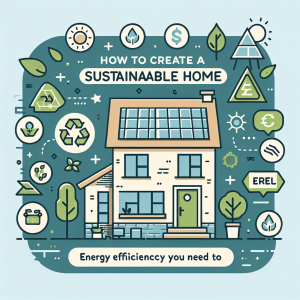Innovative Approaches to Waste Management
The landscape of waste management has evolved significantly in recent years, driven by the increasing need for sustainable practices and the reduction of environmental footprints. Traditional methods, while still widely used, are giving way to innovative approaches that promise greater efficiency, cost effectiveness, and environmental sustainability. At the forefront of this evolution are a range of paradigm-shifting technologies and methodologies that aim to transform how society manages waste.
One of the most notable innovative approaches in waste management is the use of smart technology. Smart waste management systems utilize Internet of Things (IoT) devices, sensors, and data analytics to optimize collection and processing operations. These systems offer real-time monitoring of waste levels in containers, enabling municipalities and waste management companies to streamline their collection routes. This optimization not only reduces operational costs and carbon emissions but also minimizes traffic congestion and the wear and tear on collection vehicles.
In terms of public engagement and waste reduction, mobile applications now play a vital role. These apps provide users with information on recycling guidelines and offer incentives for proper disposal practices. Some applications also facilitate peer-to-peer sharing of unwanted items, effectively reducing the volume of waste. By educating and engaging consumers, these digital tools foster community-driven efforts in reducing waste generation at the source.
The circular economy framework is another pioneering concept reshaping waste management. Unlike the traditional linear economy model of ‘take, make, dispose,’ the circular economy emphasizes designing products with their end-of-life in mind. This approach encourages the use of materials that can be recovered and reused, thus minimizing waste. Companies adopting this model often prioritize durability, repairability, and recyclability in their products, significantly extending their lifecycle and reducing waste generation.
Advanced recycling technologies are also gaining traction. Chemical recycling, for example, offers a solution to plastics that are traditionally deemed non-recyclable through mechanical means. By breaking down plastics to their basic chemical components, this method allows them to be repurposed into new materials identical in quality to those made from virgin resources. Such technologies not only divert waste from landfills but also reduce dependence on fossil fuels for virgin plastic production.
Biodegradable materials and composting innovations are progressively being integrated into waste management strategies. Innovations in bioplastics, which are derived from renewable sources such as corn starch, sugarcane, and even algae, help reduce the environmental impact of traditional plastic pollution. Additionally, community and industrial composting initiatives leverage microorganisms to decompose organic waste efficiently, transforming it into nutrient-rich compost that benefits agriculture and reduces the need for chemical fertilizers.
Pyrolysis and gasification are two advanced thermal treatments that represent noteworthy innovations in managing waste. These processes convert organic or carbon-based waste materials into useful outputs like syngas, bio-oil, and biochar through high-temperature treatment in an oxygen-limited environment. This approach not only reduces the volume of waste but also captures its inherent energy, providing cleaner alternatives to conventional fuels.
An innovative frontier in waste management involves biomass conversion. Agricultural waste and other biomass forms can be processed into bioenergy through anaerobic digestion. This method captures methane emissions, otherwise a potent greenhouse gas, and transforms the biomass into biogas and digestate, with the former used for energy and the latter as a fertilizer. These processes transform waste challenges into opportunities for creating renewable energy and promoting sustainable agricultural practices.
Municipalities and corporations are increasingly turning to artificial intelligence and machine learning for predicting waste generation patterns and optimizing waste management strategies. These technologies analyze vast amounts of data to identify trends and trigger alerts for potential waste-related issues before they become critical. AI-enabled waste sorting robots are also emerging as a transformative tool, capable of accurately separating and directing waste streams to their appropriate recycling paths, thus improving the efficiency and worth of recycling operations.
Innovative collaborations and public-private partnerships are essential to advancing waste management. Initiatives that involve policymakers, corporations, non-governmental organizations, and local communities foster an integrated approach to waste reduction and resource recovery. These collaborations often lead to the development of policies and investments in sustainable waste management infrastructure, driving long-term change.
Lastly, educational initiatives and behavioral change campaigns are indispensable when it comes to innovative waste management. People are more likely to engage in sustainable waste practices when they better understand the impact of their actions. Educational programs that emphasize the importance of the “reduce, reuse, recycle” motto and other sustainable practices are imperative to the success of any innovative waste management strategy.
In summary, as the world grapples with an ever-increasing volume of waste, the need for innovative waste management solutions has never been more critical. From smart technologies and circular economies to advanced recycling techniques and collaborative efforts, these approaches hold promise for a sustainable future. They ensure that waste is managed in a way that minimizes environmental impact while maximizing resource efficiency and economic viability. By embracing innovation, society can shift towards more sustainable waste management and a cleaner, healthier planet.


